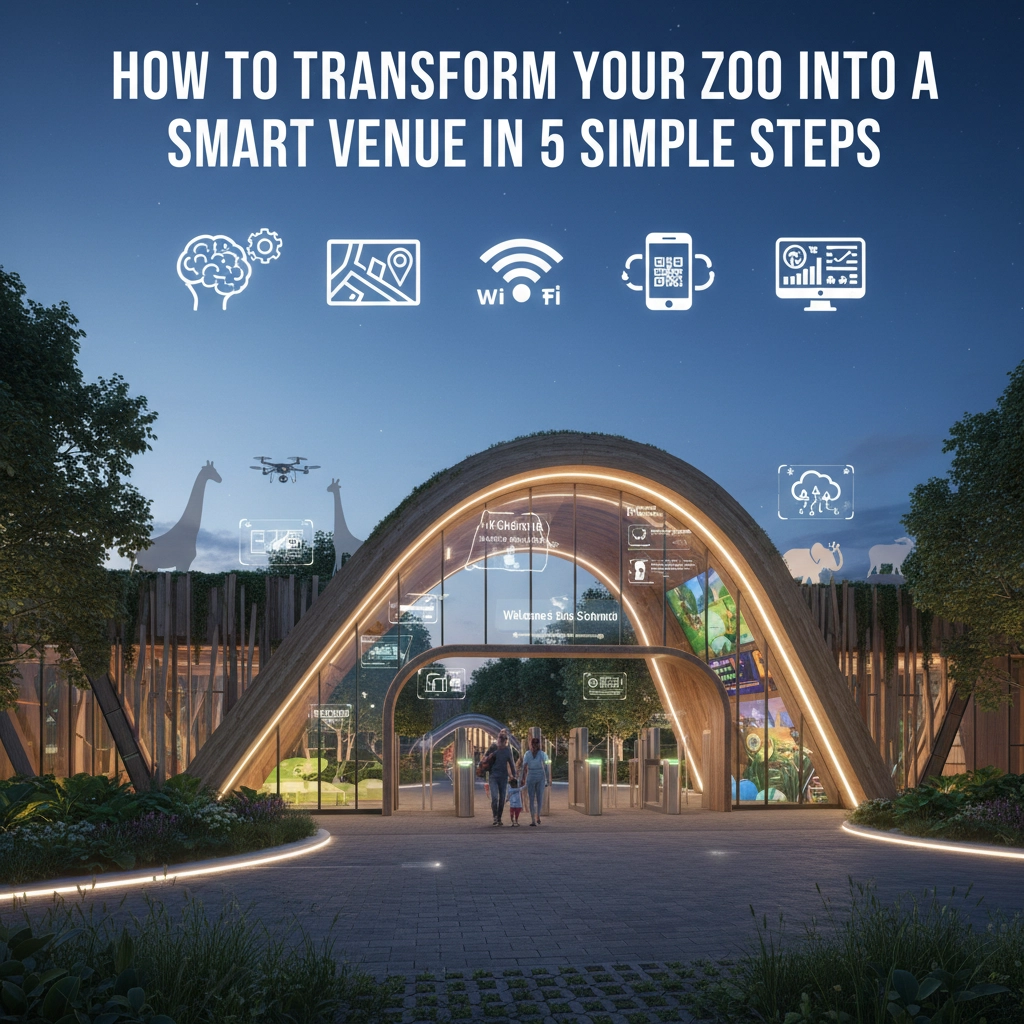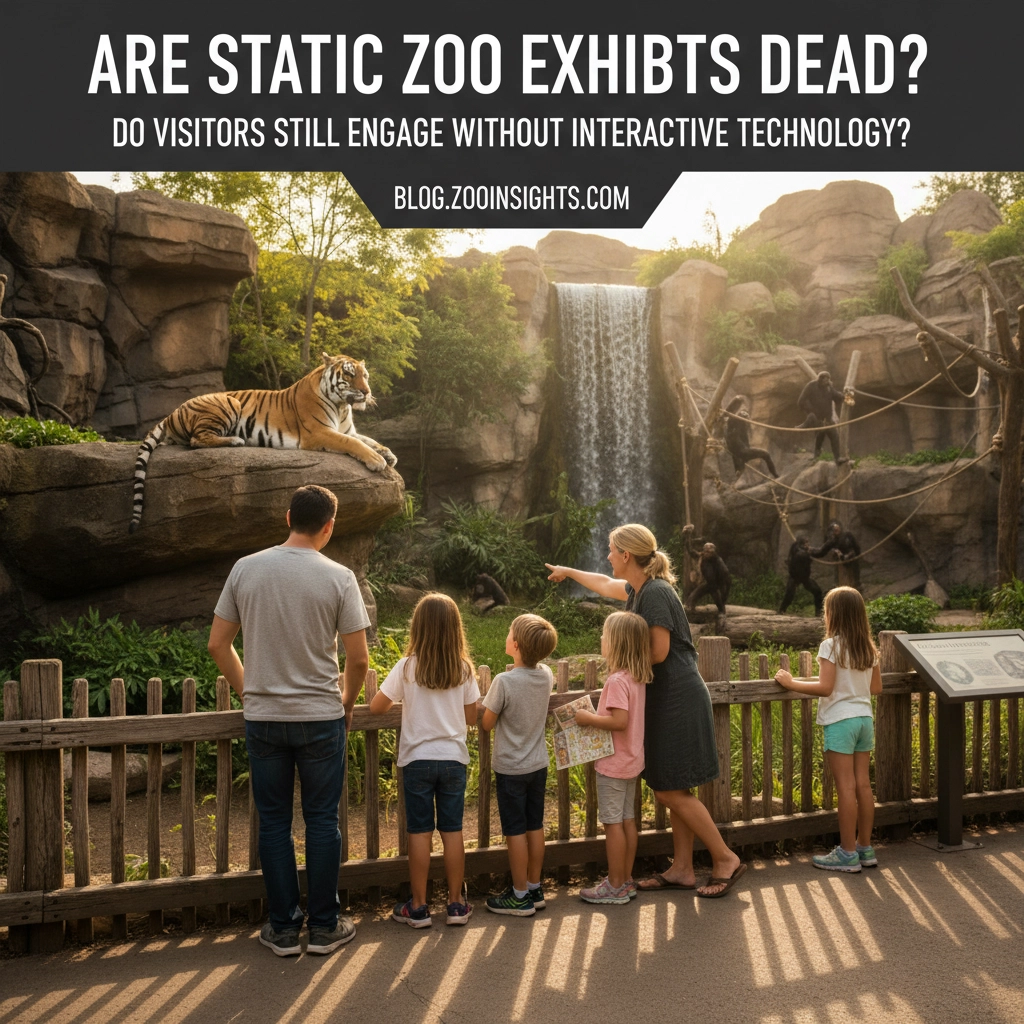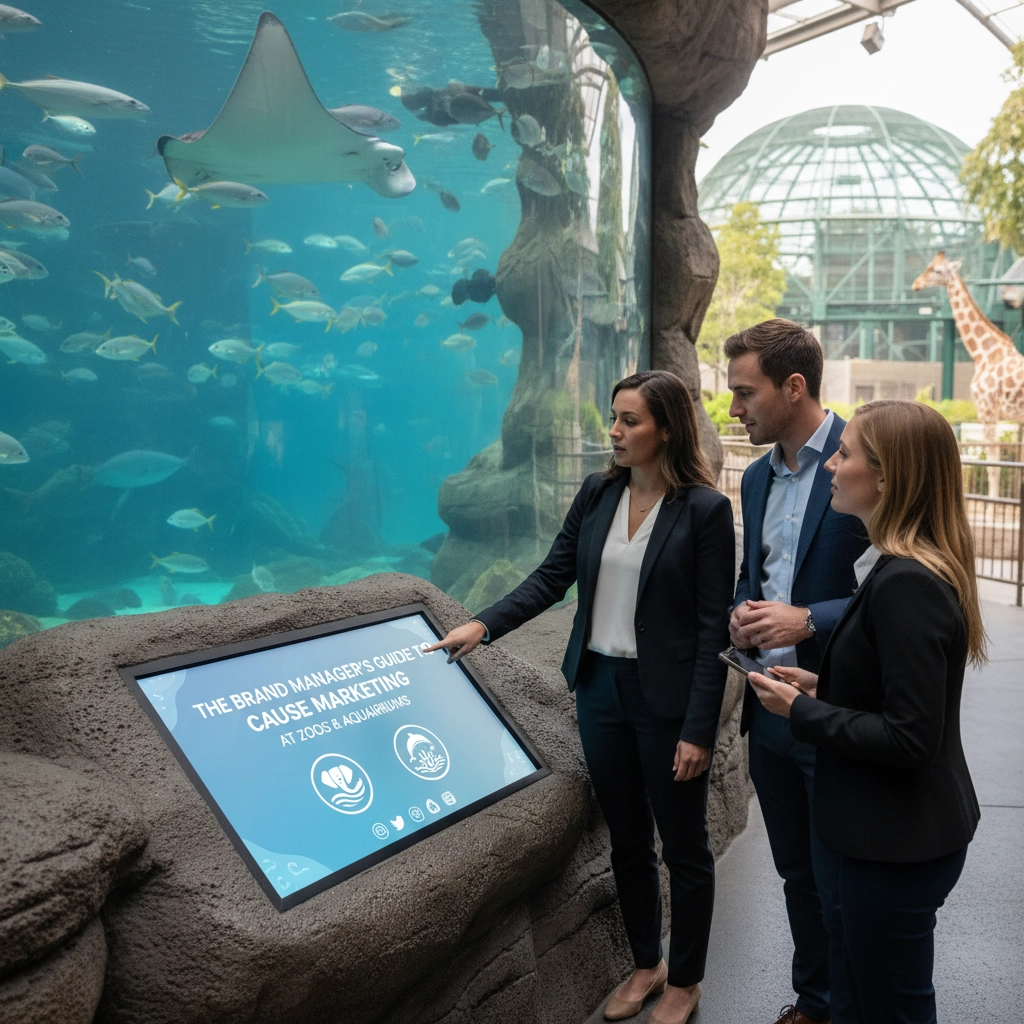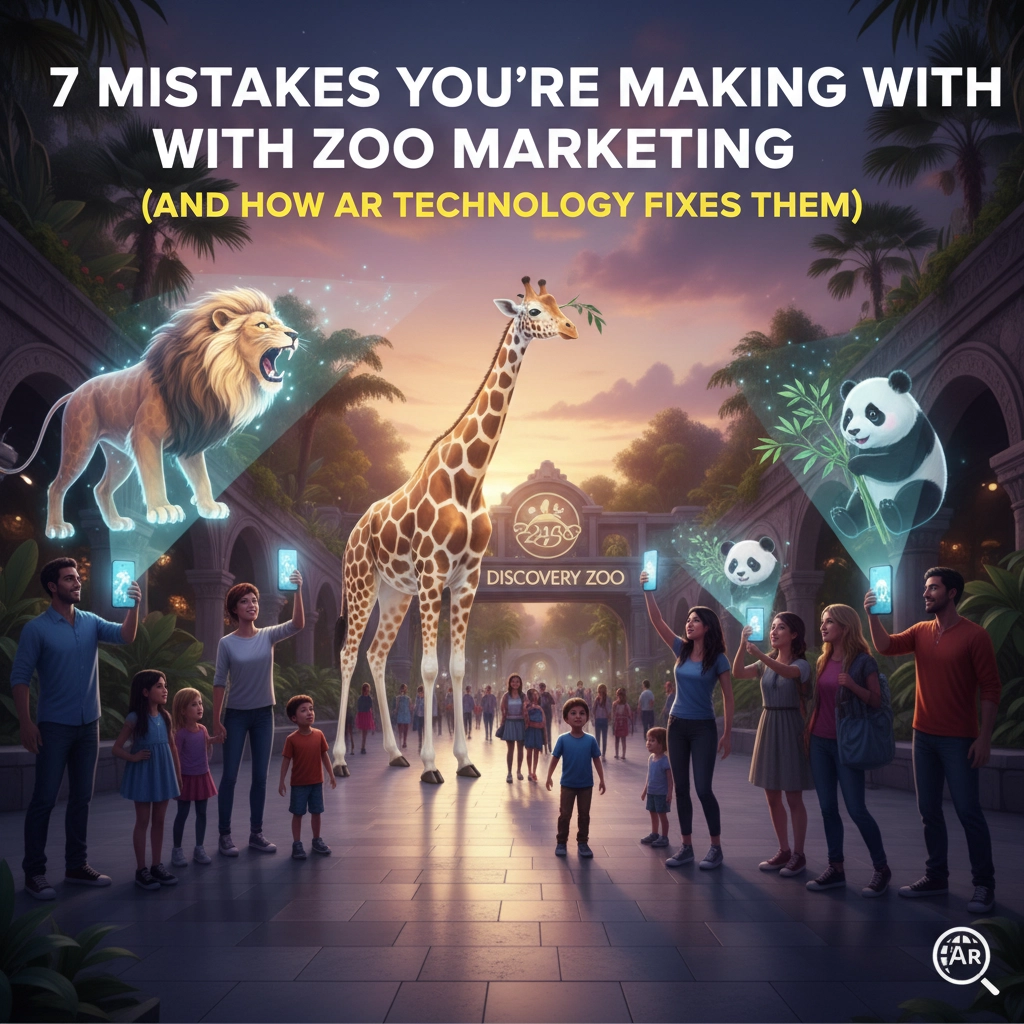The zoo industry is experiencing a digital revolution. As visitor expectations evolve and competition for attention intensifies, zoo operators face a critical decision: stick with traditional exhibit formats or embrace augmented reality technology. Recent research reveals compelling insights about which approach truly drives visitor engagement.
The Current State of Zoo Visitor Engagement
Modern zoo visitors, particularly Gen Z and millennial families, arrive with smartphones in hand and expectations shaped by interactive digital experiences. They're seeking more than passive observation: they want immersive, educational encounters that create lasting memories and shareable moments.
Traditional exhibits have served zoos well for decades, providing reliable information through physical signage and static displays. However, visitor behavior studies show that most people spend less than 30 seconds reading traditional zoo signage, often missing crucial conservation messages that could inspire action.

How AR Transforms the Zoo Experience
Augmented reality exhibits are changing this dynamic dramatically. Research from 2025 found that most zoo visitors view AR as a "highly positive" addition that significantly boosts their engagement and encourages them to observe exhibits for extended periods.
Interactive Storytelling That Captivates
AR technology transforms simple animal viewing into immersive storytelling experiences. Visitors can point their smartphones at exhibits to unlock:
- 3D animations showing animal behaviors not visible during regular viewing hours
- Interactive conservation stories that connect local wildlife to global environmental challenges
- Gamified learning experiences where visitors complete challenges to unlock additional content
- Virtual interactions with endangered species through realistic digital overlays
Measurable Engagement Benefits
The impact on visitor behavior is substantial. Magdeburg Zoo's implementation of AR experiences at their penguin and lemur exhibits demonstrated how this technology effectively communicates environmental challenges while providing actionable hope through features like virtual tree planting.
Similarly, Halle Zoo's real-size animal displays enhanced with AR provide detailed species information that would be impossible to convey through traditional signage alone, resulting in visitors spending three times longer at enhanced exhibits compared to traditional displays.
Traditional Exhibits: The Foundation That Still Matters
Despite AR's advantages, traditional exhibits remain valuable for several reasons. They provide direct, unmediated connection with living animals: the fundamental zoo experience that visitors ultimately seek.
Reliability and Accessibility
Traditional signage offers consistent information access regardless of technology barriers. Not all visitors arrive with compatible smartphones or fully charged batteries, making physical displays essential for universal accessibility.
Cost-Effective Information Delivery
For budget-conscious operations, traditional exhibits require minimal ongoing maintenance once installed. They deliver educational content without the technical complexity or potential points of failure associated with digital systems.

The Engagement Data Speaks Clearly
When comparing visitor behavior metrics, AR exhibits consistently outperform traditional displays across key engagement indicators:
Dwell Time: AR-enhanced exhibits see 200-300% increases in visitor dwell time compared to traditional displays. The interactive nature of AR naturally encourages exploration and discovery.
Information Retention: Studies show visitors retain 65% more information when it's delivered through interactive AR experiences versus static signage, thanks to multi-sensory engagement and active participation.
Social Sharing: AR experiences generate significantly more social media content, with visitors eager to share unique digital interactions that showcase their zoo visit to friends and family.
Return Visit Intent: Zoos implementing AR report higher visitor return rates, as seasonal content updates and new AR features provide ongoing reasons to revisit exhibits.
Implementation Strategies That Work
Successful AR integration requires strategic planning rather than wholesale replacement of existing infrastructure. Here's how leading zoos are approaching implementation:
Start with High-Impact Exhibits
Focus initial AR implementation on exhibits featuring:
- Endangered species where conservation messaging is crucial
- Popular animals that already attract longer viewing times
- Educational opportunities that benefit from visual storytelling
- Areas where traditional signage feels inadequate for the story you want to tell
Design for Dual Experiences
The most successful implementations enhance rather than replace the core animal viewing experience. Visitors should be able to enjoy meaningful engagement whether or not they use AR features, ensuring broad appeal across different comfort levels with technology.

Budget Considerations and ROI
While AR implementation requires upfront investment, the return on investment can be substantial. Zoos report:
- Attendance increases: Some facilities see 15-25% attendance boosts in the first six months following AR implementation
- Extended visit duration: Longer visits translate to increased food, beverage, and gift shop revenue
- Premium experience pricing: AR can justify higher admission fees for enhanced experiences
- Educational grant opportunities: Many conservation organizations fund innovative educational technology initiatives
Cost-Effective Implementation Approaches
For budget-conscious operations, consider these strategies:
- Pilot Programs: Start with 2-3 exhibits to test visitor response and refine your approach
- Seasonal Content: Develop AR experiences that can be updated with new content throughout the year
- Partnership Opportunities: Collaborate with technology companies seeking showcase installations
- Grant Funding: Apply for educational technology grants focused on conservation awareness
Measuring Success: Key Metrics to Track
Implementing AR without proper measurement wastes resources. Track these essential metrics:
- Average visit duration at AR-enhanced exhibits vs. traditional displays
- Visitor satisfaction scores through post-visit surveys
- Social media engagement and user-generated content featuring AR experiences
- Educational impact through pre/post knowledge assessments
- Revenue per visitor changes following AR implementation
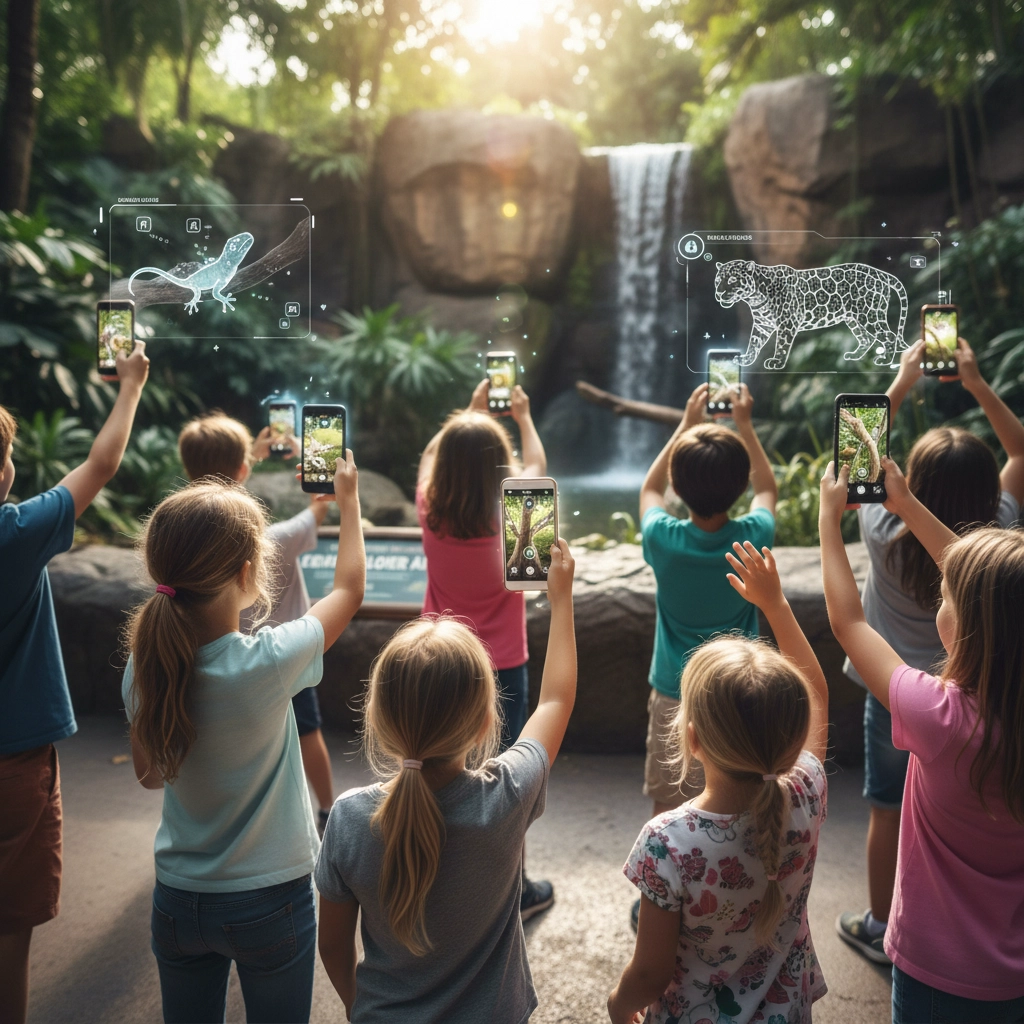
The Future of Zoo Engagement
The evidence strongly supports AR technology for driving visitor engagement, but the most successful approach combines the best of both worlds. Zoos should maintain the authentic animal viewing experience that draws visitors while layering on interactive technology that deepens understanding and connection.
This hybrid approach ensures accessibility for all visitors while providing optional enhanced experiences for those seeking deeper engagement. It's not about choosing AR or traditional exhibits: it's about creating a seamless experience that serves diverse visitor preferences and learning styles.
Looking Ahead
As AR technology continues advancing and costs decrease, adoption barriers will continue falling. Zoos that begin implementing thoughtful AR strategies now position themselves as innovative leaders while their competitors struggle to catch up.
The question isn't whether AR drives better engagement than traditional exhibits: the research clearly demonstrates its superiority across key metrics. The real question is how quickly your zoo can begin implementing AR experiences that transform passive visitors into engaged conservation advocates.
Ready to explore how AR can revolutionize your zoo's visitor engagement? The technology exists today to create the immersive, educational experiences your visitors are seeking. The only question remaining is when you'll take the first step.
Dan Kost is CEO of Zoo Media, helping entertainment venues and organizations optimize visitor engagement through innovative advertising and technology solutions. Connect with our team at Zoo Media or reach out directly via our AI Receptionist at +1 (323) 676-0621.


